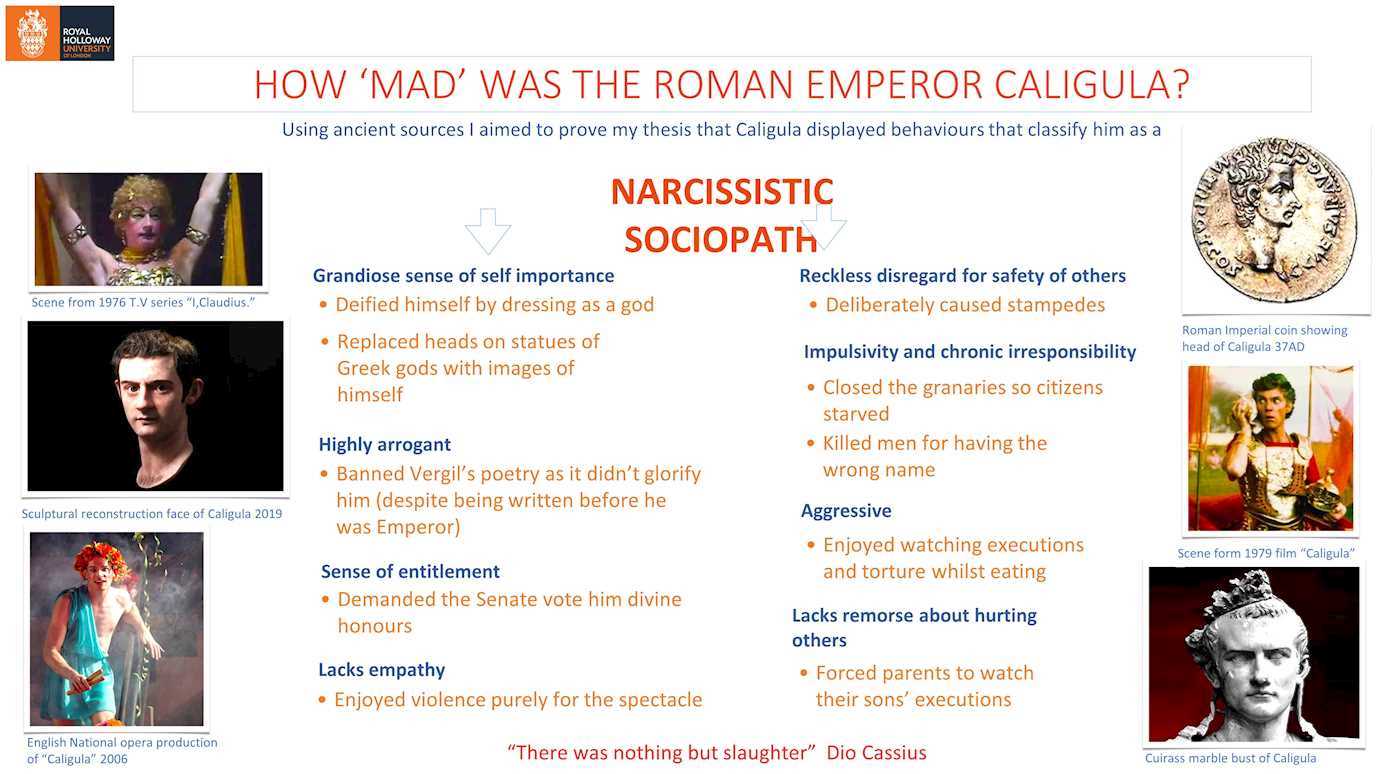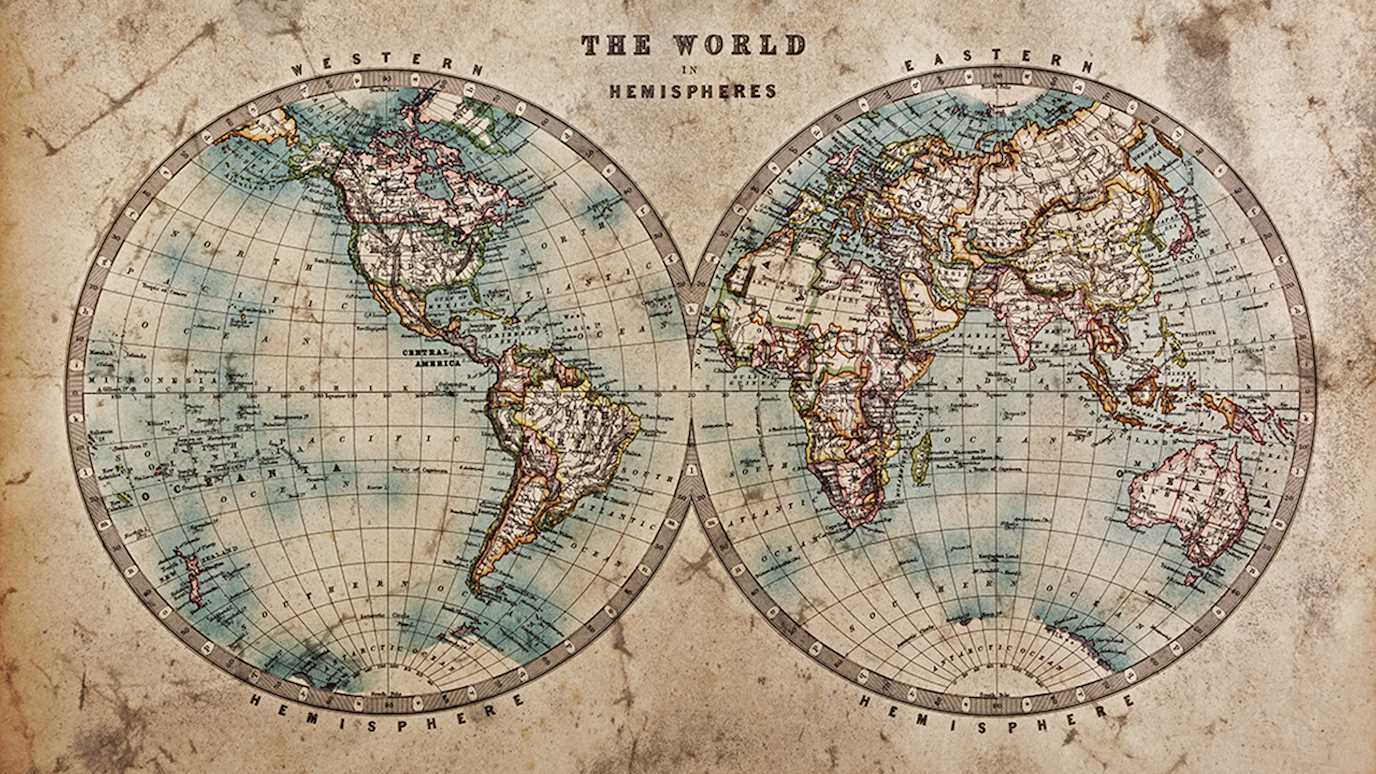How 'mad' was the Roman emperor Caligula?
What the Ancient Romans would have termed ‘mad’ we now recognise to be a wide spectrum of behavioural disorders. I have presented the main traits for the two disorders and given examples from the writings of Suetonius and Dio Cassius that evidence my argument for Caligula being a narcissistic sociopath. There are many examples of Caligula’s narcissism and sociopathy within these sources and I aimed to choose some of the most striking that would have immediate impact on the reader and allow them to make the connection between Caligula’s behaviour to a diagnoses of narcissistic sociopath. These behaviours include Caligula’s rampant lust for violence and bloodshed and his self deification.
The name ‘Caligula’ is synonymous with ‘madness’ and there was a plethora of modern cultural images of Caligula that reflect this. Caligula’s story has inspired films, operas, television series and countless books. The portrayal of Caligula’s excesses work well in a visual concept and this was evidenced in much of the visual material I found. The contemporary images I chose all show Caligula in a crazed manner. In the scene from the series “I, Claudius” Caligula is portrayed dressed as Jupiter. This signifies Caligula’s psychotic pageantry and self deification, and reflects passages from the writings of both Suetonius ad Dio. This is again seen in the English National Opera production image where Caligula is portrayed wearing a wreath, a turquoise toga and visible makeup. This reflects the narcissistic tendencies that Caligula had for making a spectacle of himself.
In the image from the film “Caligula” the Emperor is presented in his Imperial attire, laurel wreath and gold breastplate - a reference to Caligula’s profligate spending. The pomp of Caligula’s attire is juxtaposed with the senseless action of him talking to a shell. Caligula’s grandiose sense of self importance led him to boast he had conquered nature and that even Neptune feared him.
The depiction of Caligula on the coin appears almost as a caricature. It could be argued that the image reflects the general opinion of the contemporary Roman public towards its Emperor. It is notable that Caligula is not shown with a laurel wreath as many other coins depicting Emperors from the Imperial period do.
Caligula has left us a legacy - a story that stills horrifies and thrills whether we are interested in Ancient history or not. It is my intention that my viewer would be intrigued and would be stimulated to delve further into the history of Caligula. His story of evil and violent actions, and erratic and wildly impulsive behaviour is not just a mythological fantasy but the story of a man with recognisable personality disorders who was allowed to give them full reign because of the position he held.

























